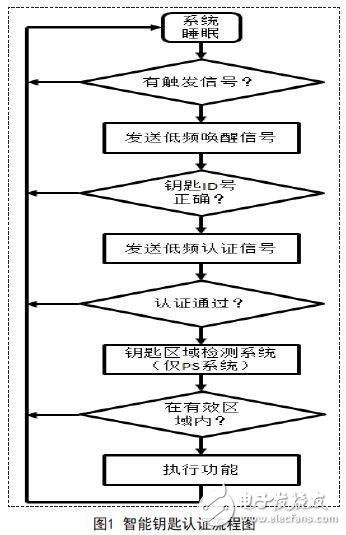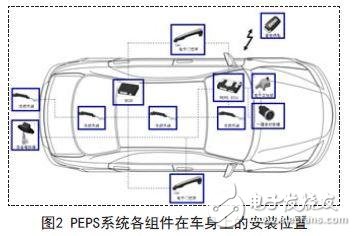1 Introduction The automotive PEPS system is rapidly becoming one of the most representative solutions in the wireless access application of vehicles. The so-called PEPS is the abbreviation of Passive Entry & PassiveStart, which means keyless entry and keyless start system, which uses advanced RFID radio frequency. The technology and vehicle identity code recognition system has completely changed the development prospects of the car security anti-theft application field, and brought a new and convenient driving experience to the user. In the following, we will introduce the PEPS system that analyzes the safety and comfort of this system from the aspects of system function, working principle and system design. 2. Introduction to PEPS System For a car equipped with a PEPS system, the driver can complete the operation of opening the door and starting the vehicle engine without pressing the remote control button on the smart key or inserting the key into the lock cylinder. Key and press the trigger button on the handle or a button to activate the button. In terms of vehicle anti-theft security, the complex two-way identity authentication process between the smart key and the PEPS base station has also been substantially improved compared to the previous generation of the remote key entry (RKE) system. 3. The working principle and certification process of PEPS system From the perspective of system function, the PEPS system can be divided into two parts, which are divided into PE keyless entry part and PS keyless start part, which represent the two stages of the driver before entering the vehicle and entering the vehicle. But from the perspective of the working principle of the system, the two are extremely similar. Simply put, whether it is PE or PS system, the relative position between the smart key and the body base station (PEPS ECU, hereinafter referred to as ECU) is detected by the low frequency antenna, and the high and low frequency signals (high frequency 433.92MHz, low frequency) are adopted. 125KHz) Establish an effective two-way interactive communication between the ECU and the smart key. Determine whether to open the door lock (PE system) or start the vehicle engine (PS system) according to the ECU's identity verification result on the smart key. In the two-way authentication process between the above-mentioned smart key and ECU, low-frequency signal wake-up and high-frequency signal authentication are not only the key to determining the anti-theft security performance of the vehicle, but also one of the key elements determining the performance of the PEPS system. The so-called low-frequency signal wake-up, taking the PE system as an example, means that when the driver gives a trigger signal to the PEPS system, the ECU will switch from the sleep state to the working state, and send a key to wake up the message through the low-frequency antenna to the smart key, when the key After receiving the message through its own low-frequency antenna, the message will be verified by its own smart chip. If the verification result matches the data stored in the key, the smart key is awakened; and the high-frequency signal verification refers to After the smart key is awakened, it will send its ID ID code to the ECU as a high-frequency signal. If the ECU recognizes that the ID number matches the key code of its own system, it will send a verification to the smart key through the low-frequency signal. Code, the smart key that receives the verification code will encrypt the verification code through a specific jump code algorithm, and send the encryption result back to the ECU through the high frequency signal. The latter will receive the encrypted data with its own The calculation results are compared. If the two match, the corresponding operation command will be sent to the BCM through the CAN bus, and the latter will unlock the door lock or open it. Operation box. Although the above authentication process is very complicated, with the high-speed computing capability of the smart chip, the entire authentication process takes only tens of milliseconds in practical applications, so there is no feeling of delay for the user. Figure 1 shows the working flow chart of the above authentication process. 4.PEPS system design The PEPS system designed this time includes the following components: PEPS ECU, BCM, smart key, electronic door handle, low frequency antenna, one-button start button, electronic column lock and trunk button. The installation position of each component on the vehicle body is shown in Figure 2. The basic functions and design principles of each component are briefly introduced below.
Water-cooled capacitor is supercapacitor is a capacitor with a capacity of thousands of farads.According to the principle of capacitor, capacitance depends on the distance between the electrode and electrode surface area, in order to get such a large capacitance, as far as possible to narrow the distance between the super capacitor electrode, electrode surface area increased, therefore, through the theory of electric double layer and porous activated carbon electrode.
Water-Cooled Capacitor,Water-Cooled Power Capacitor,Water-Cooled Electric Heat Capacitor,Water-Cooled Electric Heating Capacitor YANGZHOU POSITIONING TECH CO., LTD , https://www.yzpstcc.com
